calsfoundation@cals.org
Big Springs (Stone County)
Big Springs is located in Sylamore Township on Big Springs Road just off Highway 66 (West Main Street) about a mile and a half northwest of Newnata (Stone County) and four miles northeast of Timbo (Stone County). The county seat, Mountain View, is about seven and a half miles east via West Main Street. The community received its name from a large spring where the early settlers built their cabins.
The spring, a church, a store, the nearby Avey family home place and barn, and Big Springs Cemetery on the hill made up the main part of the Big Springs community. The Avey family had a home atop the hill above the spring. They got their water by attaching a pulley to a bucket, which would be lowered into the spring and pulled back up. If visitors were seen at the spring below, the bucket would be lowered for them to use to quench their thirst for no charge. The Avey family constructed a water-powered gristmill at the spring around the beginning of the twentieth century. Many of the Avey family members are buried in the Big Springs Cemetery.
The Avey family pioneers are believed to have been part of a voluntary move by the Cherokee under various treaties made between the tribe and the U.S. government involving land exchanged in the East for land north of the Arkansas River. Others say the Avey family came on the Trail of Tears. By the time of the 1860 census, Jacob (Jake) Avey and his family were living at Buffalo in Searcy County. Jake Avey, who married Polly Ann Stevens, lived in the region of Big Flat (Baxter and Searcy counties) and Sylamore (Izard County). One of their sons, William Andrew (Bill) Avey, who married Martha Belle Freeman, built a lob cabin along Panther Branch near the Big Spring around 1891.
Bill Avey was involved in a shooting near Big Flat in August 1894 at the home of a man named John Hancock. According to the front page of the August 9, 1894, Mountain Wave, the two men were involved in a dispute that began a few days before, so when Avey passed Hancock’s house on his way to Big Flat, he decided to stop and discuss the matter with Hancock. Both men had guns, and when the two could not agree, Hancock pulled out his weapon to shoot. Hancock’s wife grabbed Hancock to separate the two combatants. By this time, Avey had pulled out his gun and fired. Hancock died a few hours later from the bullet wound. Avey surrendered himself to the sheriff and pleaded self-defense.
Members of the Cooper family were also early pioneers of Big Springs. The Cooper Cemetery at Big Springs is named for this family. In 1846, George Washington Cooper and his wife, Julia Ann (Henry) Cooper, migrated with two children from Wayne County, Tennessee, to a section of Izard County that later became part of Stone County. By 1854, they were living in a cabin at Big Springs, where Julia Ann gave birth to six more children.
Shortly after the end of the Civil War, in 1868, George Cooper obtained a license to operate a distillery at Big Springs. The distillery displayed a whiskey barrel on the front with “bar” painted on it. The Cooper distillery later became a general store at the present-day intersection of Big Springs Road and Highway 66.
According to his great-grandson, Austin Gammill, George Cooper had gone to Mountain View on July 4, 1876, and was returning home when he was attacked by two drunk men loafing at Red Doors Spring. Chill Kerley and James Martin had agreed to kill and rob the next man who came along. They struggled with George Cooper, took his knife, and stabbed him with it. He died the next day. One story has it that the two men escaped and were never heard from again.
Though the Big Springs region was sparsely populated in the days of the Civil War, roving bands of irregulars terrorized the community, looting and killing. The infamous outlaw Bill Dark hid out in the hollers and caves near Big Springs until he was killed in early 1863 by Jim Berry, a fifteen-year-old member of a Unionist-sympathizing home guard in Van Buren County. Following Dark’s demise, a discredited Confederate colonel named Horace H. Brand became the main jayhawker around Big Springs, and his band of about a dozen men wreaked havoc in the area.
Four historical places are located at Big Springs. On the National Register of Historic Places are the George Anderson House (a dogtrot house built about 1890), the John Avey Barn, and the Orvall Gammill Barn. The Clarence Anderson Barn is located at nearby Newnata. The John Avey Barn, built in 1906, is the only documented bank barn in the county, with ground-level entrances on both levels. The Orvall Gammill Barn was built in 1922 by Gammill and is locally unusual due to its transverse crib form constructed with logs rather than lumber framing. The Clarence Anderson Barn in Newnata was built in 1925. The building has a distinctive pair of gable-roof dormers placed near the ridge line, which are not usually found on barns in the region.
During the Great Depression of the 1930s, canning kitchens were established and encouraged by the New Deal government to help families preserve food for times of need. (The Home Demonstration program was begun in 1912 in central Arkansas to help improve the lives of struggling farm families. By the early 1930s, the program had been extended into Stone County.) Big Springs was the site of one of these canning kitchens.
In the twenty-first century, the spring by the side of the road is a main attraction for Big Springs, and the Missionary Baptist Church near the spring is active. The Pleasant Hill Church is about two and one half miles to the northwest. The Big Springs and Cooper Hill cemeteries are large and well kept. The closest store is the Timbo Grocery a few miles up the highway. Along with truck farming, raising livestock (especially cattle) represents the chief livelihood for those who live in the area. Most of the non-agricultural jobs are in nearby Mountain View.
For additional information:
Davis, Michael A. “The Legend of Bill Dark: Guerrilla Warfare, Oral History and the Unmaking of an Arkansas Bushwhacker.” Arkansas Historical Quarterly 58 (Winter 1999): 414–429.
Home Demonstration Clubs: Making Life Better for Arkansans over 100 Years.” Heritage of Stone 42 (2018): 1–25.
Johnson, Dee Strickland. “Dark Days.” Mountain View Herald, September 11, 1973, p. 11.
Morrison, Kathy. “Rock Creek News.” Marshall Mountain Wave, November 23, 2000.
Taylor, Peggy. Cooking With Memories, “Jammin’ in Mountain View”: Stone County’s Families—Their Stories, Photos, and Recipes. Mountain View, AR: Genealogy Division Stone County Historical Society, 2010.
Kenneth Rorie
Van Buren, Arkansas
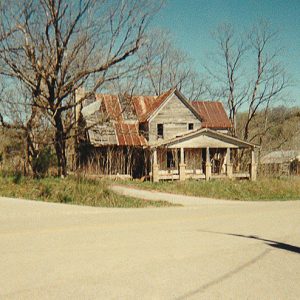
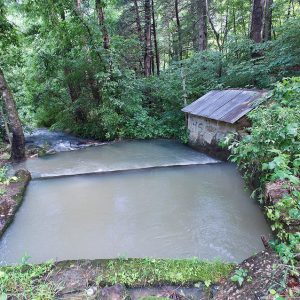
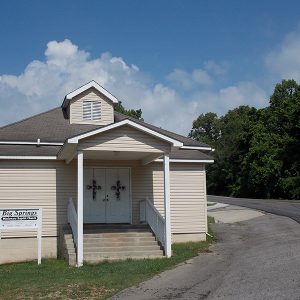
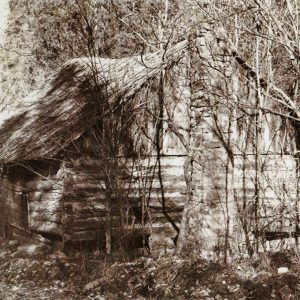
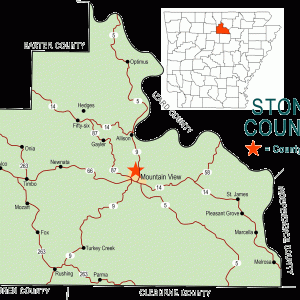




Comments
No comments on this entry yet.